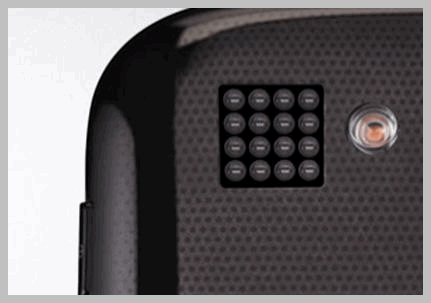Pelican has an array of 16 lens in 4 by 4 rows that will give smartphone cameras another leg up in their contest with compact camera vendors for consumers loyalties. Compact cameras have the advantage of much bigger and better optical zoom lenses; generally better flash units, slightly better battery life and generally better controls for the operation of the camera including easily replaceable battery, disk card plus a tripod screw mount.
Smartphone cameras have larger and more durable screens, light weight, touch screen easy operations, and the ability to transfer files more easily to other devices or remote clients. The CPU chips, camera sensors and the capacity of the disk cards are roughly equivalent although maximum size of disk card available is larger for compact cameras.
However, compact cameras dominate smartphone cameras in ISO range sensitivity , aperture settings, shutter speed, and white balance settings. In addition, controlling these settings is doable both manually and with screen settings where as smartphone cameras have only screen settings. So compact cameras still lead in overall picture taking versatility.
Smartphone Cameras Slowly Catch up
Just two years ago, compact cameras had a distinct advantage in their lenses, camera sensors, and overall performance by a wide margin. But improvements in smartphone camera sensors in size, sensor technology used [move to BIS-CMOS], and beefed up image post processing have earned much improved performance for smartphone cameras For example the Samsung Galaxy S4 sports the following features[we have highlighted in green features where they beat most compact cameras]:
1)Display – Super AMOLED capacitive touchscreen, 16M colors on 5inch diagonal
2)Display size – 1080 x 1920 pixels at ~441 ppi pixel density
3)Display specs – multi-touch with Gorilla Glass 3
4)Camera sensor – BIS-CMOS 13 MP, 4128 x 3096 pixels, autofocus and image stabilization
5)Camera secondary – 2MP, 1080p video at 30fps and still camera
6)Camera image-taking – Dual LED Flash, Simultaneous HD video and image recording, geo-tagging, touch focus, face and smile detection, image stabilization, HDR
7)Memory – microSD,up to 64 GB and 2GB RAM
8)CPU – 1.6 GHz Quad-Core Cortex A-15
It is the last spec that is crucial for smartphone cameras – all the excess computing power that is available when the camera is operating [and not the phone]can then be devoted to immediate post processing. Some vendors like Nokia and Samsung take two images and merge them for better lowlight performance. In the Blackberry Z10 camera ten images are taken and then the user can dial among the images for the best facial results which are automatically spliced in . The Sony Xperia has HDR and Panorama image-taking where again the user customizes the final results.
All of the major smartphone cameras not only have touch screen controls but also basic photo edit programs. And of course there is a wide range of 3rd party photo editing tools from Adobe, Aviary, Nik and a number of photo app software developers for smartphone users to choose from. As for what the Galaxy S4 camera can deliver in pictures look at this very clever comparative app. In sum, there is a reason beyond the fact that the smartphone is always with you for their increased usage in popular picture taking – the camera BIS-CMOS sensor and immediate post processing add to the smartphone image quality.
How the Pelican Grid Array Can Improve Smartphone Image Taking Even More
How do Pelican’s 16 lens help? Well in three ways. Each lens takes only one color which allows for increases in sharpness because of less image interference in the immediate post processing done by Pelican image delivery software. Second, each line of 4 lenses have a different fixed focal range So like the Lytro plenoptic system, Pelican post processing allows users to customize the area of focus after the image is taken:
Note how the area in focus moves from front to back in these 3 Pelican images
Finally, because each lens is offset from the other by a regular amount it is possible to make additional corrections for low light and areas in focus. As well the Pelican software can render all planes in focus. Or the user can select which focal plane to make sharp and which to leave blurred. These capabilities were so impressive that Nokia and Qualcomm invested in Pelican Imaging to secure priority for their respective purposes.
But there is more. 3D image processing for video has already appeared in some video cameras based on two lenses – what happens if you have 16 to work with? One of the biggest give-aways to compact cameras is the lack of optical zoom. Third parties have add-on zoom lenses for the iPhone 4 but their image quality is mixed. However, with Pelican Array of lens one could do the same take 4 levels of optical zoom by using different lens lengths. The different size of lenses on each row becomes a hefty engineering design and software processing challenge but not insurmountable . Recall what is available for processing – a quad core CPU with multiple GPUs that is likely to more than double in capacity every two years into 2018.
Summary
So smartphone cameras with technology like Pelican Lens Grid and Nokia’s own 808 Pureview technology will force compact camera makers to respond with better features and post processing capabilities. By adding touch screen and WiFi, compact cameras like the Samsung Galaxy Camera have done exactly that. More compact camera vendors are starting to use smartphone features to add significant value to their products. It is certainly a case of Schumpeter Disruptive competition in the broad image taking markets. Image Innovation is here to stay for the next 4-8 years.


